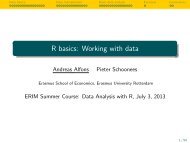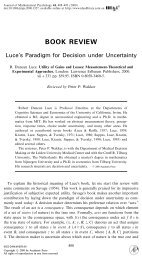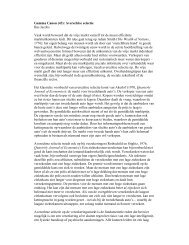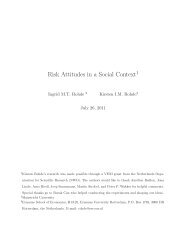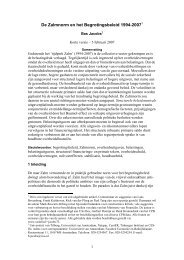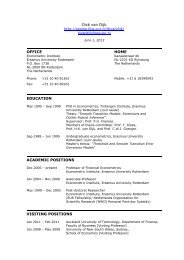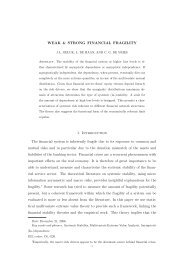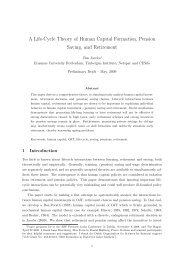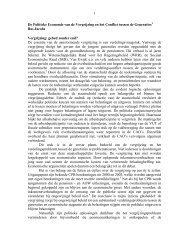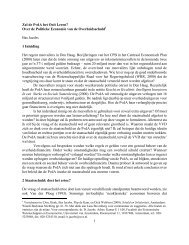Download PDF
Download PDF
Download PDF
Create successful ePaper yourself
Turn your PDF publications into a flip-book with our unique Google optimized e-Paper software.
Table 5.1 Growth rates in the number of first-year students (male and female), 1975-2002<br />
University<br />
Number of first years<br />
in 1975<br />
Absolute growth<br />
in %<br />
Growth of the share<br />
in %-points<br />
Number of first years<br />
in 2002<br />
All students 19,502 + 84 35,810<br />
Science 2,421 − 3 − 6 2,360<br />
Engineering 2,610 + 71 − 1 4,470<br />
Economics 1,493 + 329 + 10 6,400<br />
HBO<br />
All students 32,809 + 145 80,280<br />
Engineering 9,926 + 39 − 13 13,810<br />
Economics 1,950 + 1.312 + 28 27,540<br />
Source: CBS, 1992, 1994, Statline<br />
However, given the large increase in the total number of students, absolute growth is not the<br />
whole story. We also look at the shares of the respective fields of study. The share indicates<br />
whether new students have different choice patterns than students from previous years. If we<br />
look at science and engineers there is a decrease in the share for university enrolment and a<br />
larger decrease for HBO students. This suggests a shift of interest of first-year students away<br />
from S&E fields towards, among others, economics.<br />
Although not shown in the table above, the underlying figures for university students also show<br />
an increase in the share of behavioural studies. Relatively, languages studies have lost<br />
popularity. The shares for higher vocational education increased for health related subjects, at<br />
the expense of the social and behavioural studies. The evolution of the shares of first-year<br />
students can be seen in Figure 5.2 and Figure 5.3. If we look at the university students (Figure<br />
5.2), the percentage of students choosing for science fields has decreased over the whole period.<br />
While, in 1975, 13 % of students enrolled in science, this is 7 % today. The enrolment share of<br />
engineering was quite stable, 14 % in 1975 and 13 % in 2002. In total, currently about one fifth<br />
of the first year students, both in university and HBO, enrol in an S&E field (this is the first<br />
arrow in the above figure). In contrast to S&E fields, social sciences have become increasingly<br />
popular in the last 25 years. The share of students enrolling in economics increased from 8 % in<br />
1975 to 18 % in 2002.<br />
41



